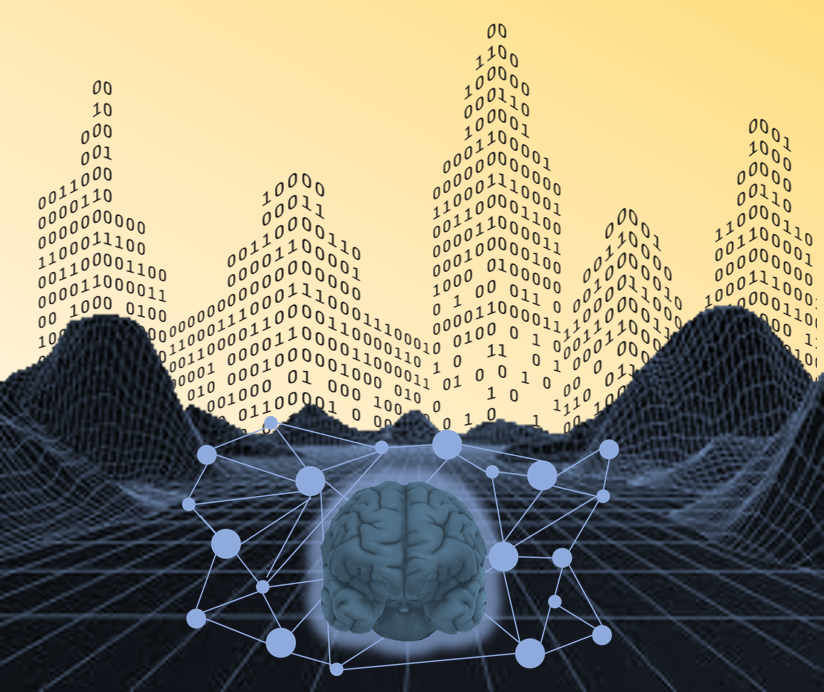The business landscape has been ever changing since the first marketplace was established. Craftsman who may have enjoyed a monopoly in their village eventually had to deal with shopkeepers selling traded goods. As technologies improved and trading routes blossomed, marketplaces had to adapt. Marketing went from displaying wares on carts to shouting at passer-bys to explanatory signage to modern ads (both printed and transmitted). Companies that successfully adapted to each new change survived. Companies that didn’t adapt were left in history’s dustbins. The latest changes in the business landscape involve digitization. The question is whether digitization is an adaptation to a changed landscape or whether digitization represents a tectonic shift so significant that it is reshaping the business landscape. The answer to that question is probably is a bit of both. Stanimira Koleva (@KolevaStanimira), Chief Operating Officer, Software AG, Asia Pacific & Japan, writes, “Digital transformation is here and it’s happening right now. It is indeed revolutionary to the extent of being disruptive, yet it is the only way ahead for the world to move.”[1] The editorial team at Inside Big Data notes, “Digital Transformation empowers an organization to take advantage of all their existing digital assets in new ways, allowing enterprises to re-envision their entire business, including customer experience, operational processes and financial models.”[2] Koleva reports, however, “A recent study by Gartner predicts that only 30% of digital transformations will succeed in their journey. While these statistics are worrisome for many, it also highlights that becoming a digital enterprise is not an easy journey.”
One-in-three odds are not very encouraging. The Inside Big Data team believes there are two critical building blocks for digitally transforming organizations that successful companies will possess: cognitive computing and the Internet of Things (IoT). “By 2018,” they report, “over 50% of enterprises are expected to embed cognitive capabilities in their apps and services.” As these cognitive systems reason and learn, they will infuse “cognitive capabilities into every aspect of an organization’s digital operations, thus transforming every mission-critical component of the business.”
As President and CEO of a cognitive computing firm, I obviously agree with that assessment. Gary Hilson (@GaryInToronto) makes an interesting point about digital enterprise transformation. He writes, “Part of the digital transformation process is understanding what the organization should no longer be doing.”[2] That’s all part of re-envisioning your business as discussed above. Hilson reports that during an IDC-sponsored webinar, Joseph Pucciarelli, the research firm’s group vice-president for IT executive programs, said, “Technology leaders who are looking to drive business innovation are focusing on five main themes: building a digital platform; fostering an ecosystem alliance that includes an internal and external support network; constructing new business models; engendering a learning organization; and, creating a center of excellence.” Koleva believes advanced analytics, data forecasting, and enhancement of customer relations (via digital platforms) are key focus areas upon which transforming enterprises must concentrate if they are “to remain profitable and stay ahead of the competition.”
According to Koleva, one of the first things transforming enterprises need to do is break up business silos. One of the characteristics of industrial age enterprises is that they are organized around functional departments. This organizational structure results in both siloed information and siloed thinking. For nearly a hundred years, the culture of siloed thinking permeated almost every organization and such thinking can have devastating consequences.[4] Koleva writes, “For large enterprises in the era of high-speed connectivity, business is very dependent on how successfully multiple business processes integrate within the architecture. Business has to be run effectively by integrating business processes and applications into a platform to break the ‘silo effect’ and to provide a better customer experience on multiple touch points.” One of the reasons so many pundits believe cognitive computing will be an essential building block for digital enterprises is that such systems can ingest and integrate both structured and unstructured data. They can work with legacy systems and provide a single version of “the truth” for all business departments. This kind of integration is necessary to achieve alignment across the enterprise.
Because cognitive computing systems are so adaptable, they can be used to improve almost any business process. This is important as enterprises reimagine their business. Koleva writes, “Apart from business silos and making smart decisions in digitization, keeping up with evolving technology and changing market demands is also on business leaders’ list. Mastering digitization is not a one-night process; hence working hand in hand with the right partners is imperative. To define their digital strategy, enterprises must co-innovate with technology providers, bring business and technology to the next level and envision the best solutions for business in order to acquire phenomenal results combining the best of both worlds.” At Enterra Solutions®, we work with clients to implement a crawl, walk, run approach to innovative business solutions. Using small proof-of-concept projects, enterprises can quickly see whether a proposed solution fits their needs and will provide the return on investment they expect. This approach also allows teams to tweak the solution as it scales. Koleva concludes, “It is vital for companies to integrate technology and innovate faster in order to keep up with the rapid adoption of all things digital. In order to achieve this, businesses should primarily focus on bridging the gap between technology and business. Digital business isn’t just about replacing the old with the new. It is about harnessing technology to enhance every aspect of an organization, reshaping and redefining businesses from the ground up.”
Rodger Howell (@rodger_howell), a principal at PwC’s Strategy&, asserts, “Operational excellence, particularly in the areas of technological adoption and cost realignment, will be central to the goal of executing through disruption.”[5] I believe that’s what Koleva means when she discusses bridging the gap between technology and business. Howell adds, “Today, it is critical that companies go beyond making adjustments and instead open themselves up to a complete re-imagination of their strategic and operational purpose, including objectively assessing competitive position and thoroughly realigning operations to the new normal.” He concludes:
“Digital technology will become increasingly integral to companies across broad swaths of industry. The line between technology companies and technology-enabled companies competing within traditional industries has blurred, which will force organizations in every facet of the economy to realign their operations to compete in a digital world. Great digital customer experiences are high-visibility, and customers are actively demanding improved digital tools for all of their needs. When done right, digital can bring businesses closer to their customers. Executives should pay attention not only to how they can put digital tools to work but also to how the resulting customer interactions can be optimized through integration with the organization’s full suite of functional departments on the back end. Operational frameworks must be restructured to leverage the power of the new technology, both with respect to customer interface and internal operating processes, in order to remain competitive.”
In the end, it doesn’t really matter whether digitization is an adaptation to a changed business environment or whether it is reshaping the business environment. As Koleva noted above, the fact of the matter is, “Digital transformation is here and it’s happening right now.”
Footnotes
[1] Stanimira Koleva, “Digital transformation in 2016: Envisioning technology for growth,” Enterprise Innovation, 22 March 2016.
[2] Editorial Team, “A Contemporary Perspective of Digital Transformation,” Inside Big Data, 26 March 2016.
[3] Gary Hilson, “Digital transformation is about what you aren’t going to do anymore, including DevOps,” IT World Canada, 17 March 2016.
[4] Stephen DeAngelis, “The Curse of Silo Thinking,” Enterra Insights, 21 January 2010.
[5] Rodger Howell, “Strategic Alignment in an Age of Digital Change,” Supply Chain 247, 3 February 2016.





